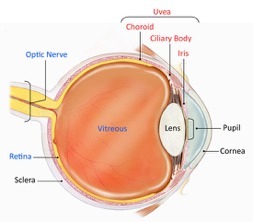https://www.youtube.com/embed/NpoBMO7WHtQ

What is Uveitis?
Uveitis is usually associated by a variety of circumstances, which lead the middle layer of the eye, uvea and adjacent tissues to become inflamed. The uvea provides the retina with blood. The retina is that portion of the eye which focuses and directs the images to the brain. It is light sensitive. It is usually red because of its uvea blood supply.
What are the symptoms leading to doctor’s recommending – Uveitis?
- Eye pain
- Light sensitivity
- Blurred vision
- Severe redness in the eye
Evaluations for Uveitis
- Blood tests
- Angiography
- A Funduscopic Exam
- Ocular Pressure
Treatment for Uveitis
Uveitis treatment aims at reducing pain and inflammation, preventing damage to the eye and restoring any loss of sight. The treatment of posterior uveitis is based on corticosteroid implants. The medications are released continuously directly at the inflammatory area in the back of the eye. When the person has uveitis prior to that treatment, he or she may prescribe pupil-dilating eye drops to decrease pain in relation to steroids. If the person develops low eye pressure owing to uveitis, eye drops may be necessary to reduce intraocular pressure. The doctor also treats the patient with a known systemic condition, which could contribute to uveitis. Ask the doctor regarding photochromic lenses when a person is sensitive to light from chronic iritis or uveitis.













